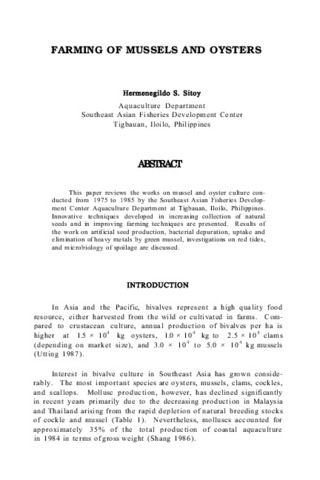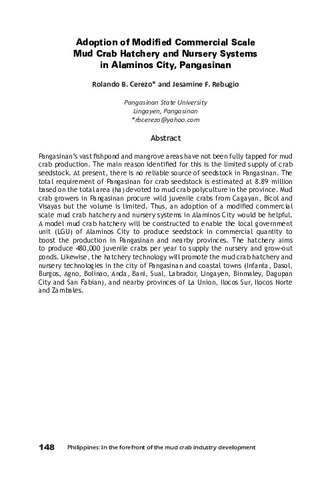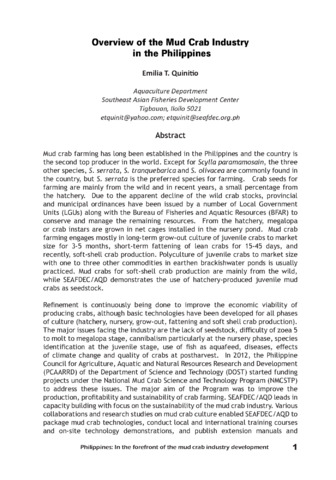Farming of mussels and oysters
- Global styles
- MLA
- Vancouver
- Elsevier - Harvard
- APA
- Help
Share
Abstract
This paper reviews the works on mussel and oyster culture conducted from 1975 to 1985 by the Southeast Asian Fisheries Development Center Aquaculture Department at Tigbauan, Iloilo, Philippines. Innovative techniques developed in increasing collection of natural seeds and in improving farming techniques are presented. Results of the work on artificial seed production, bacterial depuration, uptake and elimination of heavy metals by green mussel, investigations on red tides, and microbiology of spoilage are discussed.
Suggested Citation
Sitoy, H. S. (1988). Farming of mussels and oysters. In J. V. Juario & L. V. Benitez (Eds.), Perspectives in Aquaculture Development in Southeast Asia and Japan: Contributions of the SEAFDEC Aquaculture Department. Proceedings of the Seminar on Aquaculture Development in Southeast Asia, 8-12 September 1987, Iloilo City, Philippines. (pp. 231-248). Tigbauan, Iloilo, Philippines: SEAFDEC, Aquaculture Department.
Type
Conference paperISBN
971851113XKoleksi
- ADSEA '87 [20]
Related items
Showing items related by title, author, creator and subject.
-
Aquaculture development in Thailand
Sirikul, Boonsong; Luanprida, Somsak; Chaiyakam, Kanit; Sriprasert, Revadee (Aquaculture Department, Southeast Asian Fisheries Development Center, 1988)Aquaculture practised in Thailand is in the form of pond culture and cage culture in freshwater, brackishwater and coastal areas. The main species cultured include freshwater prawns, brackishwater shrimp, cockles, mussels, ... -
Adoption of modified commercial scale mud crab hatchery and nursery systems in Alaminos City, Pangasinan
Cerezo, Rolando B.; Rebugio, Jesamine F. (Aquaculture Department, Southeast Asian Fisheries Development Center, 2017)Pangasinan’s vast fishpond and mangrove areas have not been fully tapped for mud crab (Scylla serrata) production. The main reason identified for this is the limited supply of crab seedstock. At present, there is no reliable ... -
Overview of the mud crab industry in the Philippines
Mud crab farming has long been established in the Philippines and the country is the second top producer in the world. Except for Scylla paramamosain, the three other species, S. serrata, S. tranquebarica and S. olivacea ...







